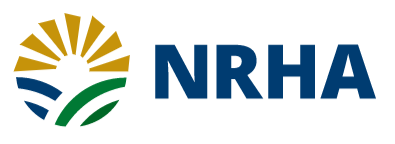Navigating health care regulations with remote monitoring vendors
Remote monitoring options are opening opportunities for rural health care providers, offering everything from specialized cardiovascular monitoring to data gathering for chronic conditions. While this rapidly expanding area offers many new opportunities, it also increases regulatory compliance considerations for health systems.
Health care leaders must ensure that remote patient monitoring tools comply with national and international regulations designed to maintain patient safety, data security, and the overall integrity of health care services. In doing so, they both protect patients and help organizations mitigate risks associated with data breaches and unauthorized access to patient information.
The following strategies give health care leaders a foundation for gathering information from vendors to ensure remote monitoring solutions meet relevant guidelines and standards, minimizing risk for your organization and building confidence that your patients’ data is secure.
Data security and privacy
One of the primary concerns in remote monitoring systems is the security and privacy of protected health information. Compliance with regulations like the HIPAA Security Rule is essential and requires electronic health information to be securely transmitted and stored. When considering a vendor, it is important to:
- Ensure any product or service you are considering has the framework to keep patient data safe. This at a minimum includes encryption for data storage and transmission, employs secure servers, and only gives authorized personnel access to sensitive information.
- Ask about regular audits and assessments they perform to identify and mitigate potential vulnerabilities as well as what plans they have to respond should a breach occur. This includes timelines for notification, which typically has to happen in 60 calendar days or less once a breach is discovered. Most companies do their best to protect patient data, but breaches do happen despite their best efforts. You want a vendor who is doing what they can to limit damage and respond quickly.
- Understand their patient consent process. A patient must consent to having their health data monitored and collected before they participate in any remote monitoring program. There also needs to be transparency during the consent process about what data will be collected, how it will be used, and who will have access to it. This transparency helps build trust and ensures that patients are aware of their rights regarding their personal health information.
- Inquire about documentation and reporting practices. Maintaining thorough documentation and reporting is essential for compliance. This includes keeping detailed records of patient consent, data access logs, and any incidents or breaches that occur. Regularly reviewing and updating documentation ensures that health care providers can demonstrate compliance with regulations and respond effectively to any audits, investigations, or record access requests from patients.
- Do your due diligence on business associate agreements. When patient data is shared with a third-party vendor, HIPAA requires a business associate agreement or contract outlining the responsibilities of each party in protecting patient data. These agreements ensure that vendors adhere to the same standards your organization follows and are crucial for maintaining a secure and compliant remote monitoring system. The U.S. Department of Health and Human Services offers more details about these agreements, including samples to help you understand what must be included in an agreement.
Device compliance and FDA regulations
Beyond a company’s processes and procedures, you also need to consider the security and safety features of the remote monitoring devices they use. They must comply with regulations set forth by the U.S. Food and Drug Administration (FDA). This includes getting assurances from a vendor that the devices they use are:
- Classified properly. The FDA places medical devices into one of three classes based on their risk levels. Each category has different regulatory controls.
- In compliance with safety and efficacy standards. A medical device’s classification dictates the standards it must meet and the pathways an organization must follow to ensure compliance with relevant standards.
- Used according to approved indications. The FDA can approve devices for one use but not another, so ensure your vendor is approved to use a device for the specific application you are considering.
Collaboration and communication
Finally, it is important to have a good relationship with the vendor to navigate any changes or concerns that arise as you work together. This is often dependent on effective collaboration and communication. Before entering into any agreements, you will want to:
- Understand how they navigate issues and changes in the regulatory environment with existing clients. Knowing this will help you know what to expect and what you can do proactively to limit disruption when changes occur.
- Inquire about their plans for downtime and outages, and make sure this is documented in any service level agreements. This is helpful to understand as planned downtime and unexpected outages can happen even without data privacy concerns.
- Determine if they are open to regular meetings and updates to help identify potential issues and ensure that all parties are aligned on compliance requirements.
- Ensure clear channels and processes exist for reporting and addressing any compliance concerns that arise. This will prevent confusion and allow for a more rapid resolution should a concern occur, helping boost confidence in regulatory compliance and benefiting the overall relationship and success of your collaboration.
The medical device regulatory environment can be overwhelming, but by following these strategies, health care leaders can navigate conversations with vendors to ensure their remote monitoring systems comply with relevant regulations. This not only protects patient data and maintains the integrity of health care services but also builds trust and confidence among patients and stakeholders. Adhering to these regulations demonstrates a commitment to patient safety and data security and facilitates smoother operations by preventing legal issues and penalties associated with noncompliance. Ultimately, these measures contribute to a more efficient and reliable health care system where patients feel secure and valued and providers can focus on delivering high-quality care without the burden of navigating regulatory concerns.
NRHA adapted the above piece from Mayo Clinic, a trusted NRHA partner, for publication within the Association’s Rural Health Voices blog.
 | About the author: Monica Coyle is the clinical director of operations at Mayo Clinic. She is part of a leadership team tasked with advancing Mayo Collaborative Services’ remote diagnostic solutions. Monica has nearly 20 years of experience in healthcare, including multiple leadership positions in research and clinical care at Mayo Clinic, where she has a track record of successfully implementing innovative approaches to health care. |
